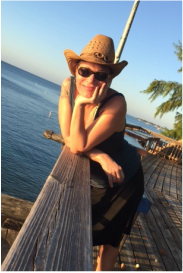ASSAY: A JOURNAL OF NONFICTION STUDIES
2.2
2.2
|
“You can’t really change the heart without telling a story.”
– Martha Nussbaum "I happen to believe that America is dying of loneliness, that we, as a people, have bought into the false dream of convenience, and turned away from a deep engagement with our internal lives — those fountains of inconvenient feeling—and toward the frantic enticements of what our friends in the Greed Business call the Free Market.We’re hurtling through time and space and information faster and faster, seeking that network connection. But at the same time we’re falling away from our families and our neighbors and ourselves. We ego-surf and update our status and brush up on which celebrities are ruining themselves, and how. But the cure won’t stick. And this, I think, is why Sugar has become so important to so many people. Because she’s offering something almost unheard of in our culture: radical empathy. People come to her in real pain and she ministers to them, by telling stories about her own life, the particular ways in which she's felt thwarted and lost, and how she got found again." – Steve Almond |
|
In the introduction to Cheryl Strayed’s Tiny Beautiful Things: Advice on Life and Love from Dear Sugar, Steve Almond, the writer who originated the Dear Sugar advice column published on Rumpus.net, describes Strayed’s writing as practicing “radical empathy.” To a world in desperate need of connection, Almond suggests that what Sugar offers her readers is a rare gift indeed—a gift that is exchanged along with stories about real lives, “real pain,” both Strayed’s and the readers who ask for her advice. Strayed’s answers, woven in brief and poignant personal essays, are an attempt to reconnect us to a “deep engagement with our internal lives” and with each other, to offer one, small “cure,” or at the very least an antidote, to the pervasive loneliness that Almond describes.
This is what Sugar’s stories offer me, as a teacher, student, and person who lives, teaches, writes, and loves within that same frantic, frenetic, and disconnected “America.” They—like most personal stories—offer the possibility of perspective, of seeing the world through the eyes of another, of experiencing narrative through another point of view, of the opportunity to connect or to reconnect with people I’ve known and those I will never meet, of experiencing an empathy that for both its presence and potential can only be described as radical. A quick look at the definition of the word “radical” will uncover the common usage, and the one that I think Irish novelist Colum McCann means when he calls for a certain kind of empathy, one that is “very different from the usual or traditional” or an empathy that is “advocating extreme measures for a change.” Perhaps, even, the concept of radical empathy might be related to the informal or slang use of the word that means “excellent or cool.” But the primary definition of radical that is lesser known, that might give us another way of thinking about what happened in the life writing courses I’ve taken and taught, is a kind of radical that is “of, relating to, or proceeding from a root.” This definition of radical refers to something that is of or growing from the root of a plant (like a radical tuber) or “growing from the base of a stem, from a rootlike stem, or from a stem that does not rise above the ground.” In this usage, radical means “basic” or relating to or affecting the basic nature or most important features of something. An empathy that is radical, then, is something from which things grow—it is essential, the most important feature. This is the “feature” that creates the kind of educational experiences that changes things. This is the kind of experience I want to give my own students, an experience that was radical because of its roots in the practice and pedagogy of empathy. The concept of “radical empathy” is catchy and has real-world implications. For example, the nonprofit organization N4 (Narrative 4), started by award-winning and literary activists Colum McCann and Luis Alberto Urrea, organizes “story exchanges” as an attempt to foster “radical empathy” in an “increasingly troubled world.” Story exchanges, according to McCann, “where you tell my story and I tell yours—are a form of narrative medicine. Stories enter the bloodstream. Stories can wound us, yes, but they are more likely to heal. We re-story ourselves in the hope that we might be able to restore ourselves.” Stories are intended to cross all kind of boundaries: socioeconomic, age, gender, and geographic with the hopes of, according to their mission statement, “breaking down barriers and shatter(ing) stereotypes.” N4—like Sugar’s advice columns—encourages “people to walk in each other’s shoes and prove that not only does every story matter, every life matters.” This is where the power of life narrative--real stories told by real people to real audiences—can be transformative, where it could lead to the kind of empathetic experience that frees us from the “jail of the self” and that can lead to the “ultimate adventure.” Tobias Wolff calls this “seeing life through the eyes of the other.” In one of the most powerful N4 exchanges, students from violence-torn communities in Chicago were paired with Newtown High schoolers who were still deeply traumatized from the shootings that occurred at the grade school just down the street at Sandy Hook Elementary School. According to the N4 website, the exchange helped the young adults gain a deeper appreciation for one another’s struggles, establish relationships based on mutual respect, and begin to heal the scars that each of their communities bears. Some of the participants wrote, “When you tell someone else’s story… it’s like someone handing over their most prized possession, maybe something made out of glass;” “The story exchange touched me deeply. I came out learning so much about life and people;” and one Newtown student: “Why do we share our stories? We want to feel human again.” Feeling “human” again. This seems to be a tall order, maybe especially for students, in a world where violence continues to invade not only countries, cities, and neighborhoods, but the very schools in which they spend the majority of their days. In order to truly understand the potential of the emotion of empathy in the classroom, an exploration of the etymology of the word “empathy,” including a discussion of its controversial and frequent misuse, is necessary. In our contemporary use of empathy, we are usually expressing a commonality of social feeling or the ability to share the emotional experiences of others, to feel “at one” with their affective responses (Swanson 127). For some, the concept of empathy extends from an individual relationship between humans and is extended to a compassionate relationship to the larger global community—to an “animate world”—and is based on the continuity between human existence and the fate of the biosphere. This kind of empathy is a driving force behind a number of ethical and political causes including animal rights and environmental activism (127). Whether we are conceptualizing empathy as an individual or global affective response, we are generally reflecting on the ability to not only imagine and reconsider, but to feel for what exists beyond the personal and the known. It is beyond the known that the realm of the “trans-individual” exists, where we experience the feeling of being in touch with something beyond ourselves. According to Gillian Swanson, empathy is a concept traditionally conceived as “a passage between minds, the mental processes that allow us to imagine the states of others as the basis of a feeling which is neither properly ours, nor empirically theirs, but borne from that connectivity” (128). However, empathy, closely bound to the concept of sympathy, is one that is often misused and misunderstood. The word “empathy” has a recent origin, appearing for the first time in English in the early 20th century, translated from the German word Einfühlung. When philosopher and psychologist Theodor Lipps introduced Einfühlung into the field of psychology, he suggested that it constituted an instinct and argued that aesthetic pleasure was derived from the drives directed toward imitation and expression. By adopting the term and reappropriating it as a projection of feelings into objects of contemplation in the natural world—everyday situations or the “arts”—Lipps reinforced a separation between self and object prior to the contemplative experience. Thus, Lipps helped define empathy in terms of an understanding of an “expressive other”—a definition that preserved the distinction between Einfühlung (“feeling into”) and the psychological concept of sympathy or Mitfühlen (“feeling with”) (Swanson 129). It was Lipps’ work in the field of psychology that brought the concept into the language of social feeling as it became associated with responses to the expressions of others through a process of “inner imitation: an expressive act by which the other invokes a feeling in the self, which is then projected ‘into’ the other by being attached to the perceived gesture: we are bound to project our own feelings into the process of perception as these are the only mental states to which we have experiential access” (130). Thus, the conflation of Einfühlung and Mitfühlen--or the extent to which feelings are projected or introjected—is transferred into our contemporary use of empathy to signify social understanding, creating an ongoing tension that followed the adoption of the word into Anglophone culture. It was experimental psychologist E.B. Titchener who proposed the word “empathy” as a way to highlight the difference between empathy as a “feeling into” objects through the imaginative projections of mind and its visualizations, from the historical interest in “sympathy” as “feeling with,” a shared or “fellow” feeling (Swanson 131). When we confuse or misuse the concept of “empathy” as simply another or more intense version of “sympathy,” we are overlooking an essential difference and potentially cheating our students (and ourselves) out of the kind of powerful work that narrative can do in their personal and academic lives. Sympathizing for a character, a writer, or a colleague–feeling for or with them—is not the same emotional experience as empathizing, or feeling into them. Sympathy essentially implies a feeling of recognition of another's suffering while empathy is actually sharing another's suffering, if only briefly. Sometimes, we’re left with little choice but to feel sympathetic because we really can’t understand the plight or predicament of someone else. It takes imagination, work, or maybe even a similar experience to get to empathy. The idea of empathy suggests a more active process. It is also less common especially in an academic setting.
|
Click here to download the PDF with Works Cited.

